There’s nothing like an unexpected bird to get the pulse racing, as I was reminded on a recent warm and sunny summer’s evening. I was driving my small open-top car on a neighbour’s farm to see what I could find. The farm in question is large – 1,000 acres – and mainly arable, though a small herd of Redpolls (not birds, but a distinctive breed of cattle native to Suffolk) are a new addition.
What makes this farm special is the radical approach to farming that has been adopted by its owner, James Bucher, who is a convert to regenerative agriculture. Worried about the state of his soil, his farming practices are now in marked contrast to most of his neighbours. He no longer ploughs but drills directly, and tries to never have bare soil exposed. He avoids the unnecessary use of what he calls “cides” (herbicides and insecticides), and isn’t afraid to innovate with different crops. Agro-forestry is new to the farm, with small blocks of trees planted in cereal fields. In addition, he has extensive areas of wild-bird cover, making this by far the best farm for wildlife in my area.
My car is about as far from an off-roader as you can get, but driven slowly it can manage the farm tracks, while being convertible makes it ideal for use as a mobile hide. I hadn’t visited the farm for a while, so was unsure which crops had been harvested, and what I might find. At first I saw little. Skylarks breed in good numbers on the farm, but in August when they have stopped singing they are much less obvious: I saw a solitary individual. There’s a good population of Grey Partridges, too, but I discovered that there was still lots of unharvested crops, so plenty of cover for the partridges to hide in.
Juvenile Lapwing. The short crest indicates its age
No bird is more symbolic of the farmed landscape than the Lapwing. Once one of the commonest and most widespread of farmland birds, it has suffered a marked decline in the latest 50 years, so has become an indicator of a healthy farmland environment. Thus I was delighted to see a flock of these handsome waders feeding on one of the harvested fields. The birds were widely scattered, feeding over a broad area, while there was a high proportion of juveniles in the flock, which numbered around 200 birds. One youngster posed nicely for my camera.
Driving on a short distance, a Wheatear dashed across the track, flashing its distinctive white rump. This bird, an early autumn migrant, was one I was looking for, so this was a minor triumph. It was the earliest Wheatear that I’ve recorded on the farm. Then, a moment later, my heart skipped a beat: a trio of Stone Curlews flew low across the field, before landing again in the golden stubbles. Stone Curlews are a Breckland special, and one of the best birds of my area, so are always a thrill to see, especially when they are unexpected, as these birds were.
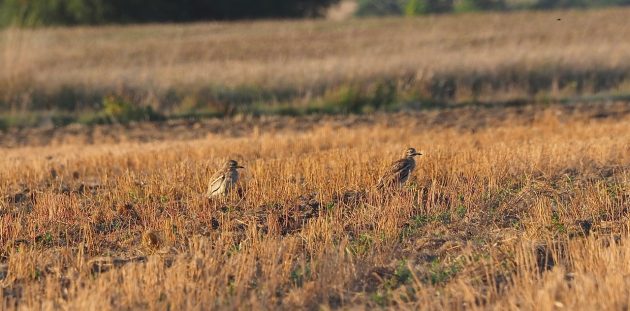
I scanned the field with my binoculars, searching for more. Stone Curlews have a happy knack of disappearing from view, as they are masters of using their cryptic plumage to merge with their background. I looked, then looked again, eventually counting seven birds, though I am sure that there were eight altogether. They were an extremely satisfying find, as this was the first autumn gathering I’d seen on the farm. In 2022 a pair nested here, and they attempted to do again in 2023, but their chicks were most likely predated.
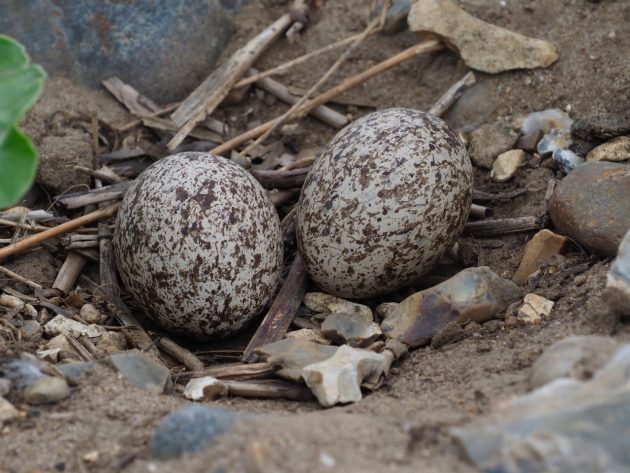
Stone Curlews typically lay two eggs in a clutch. The nest is just a scrape in the ground
I had been shown their 2022 nest by a friend who monitors (under licence) Stone Curlews in the Brecks. A couple of weeks after admiring the eggs my friend called again: “Would I like to see the chicks?” he asked. “They’re due to hatch tomorrow.” By weighing the eggs, he told me, it’s possible to predict almost exactly when they will hatch. I jumped at the opportunity. Stone Curlew chicks do not stay in the next scrape for long after hatching, so this was a one-off opportunity.
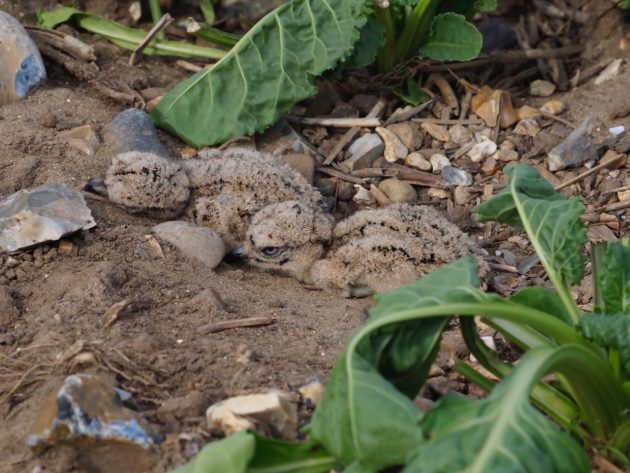
Young Stone Curlews, a few hours after hatching. They hatched from the eggs shown above
Once the young have left the nest they are difficult to monitor, as the parents tend to keep them in cover where they are difficult (if not impossible) to see. It’s not usually until they have fledged that you can discover how successful they have been. At the end of the season the birds gather in flocks at a number of traditional sites. The most I have seen in an autumn gathering is 60 individuals.
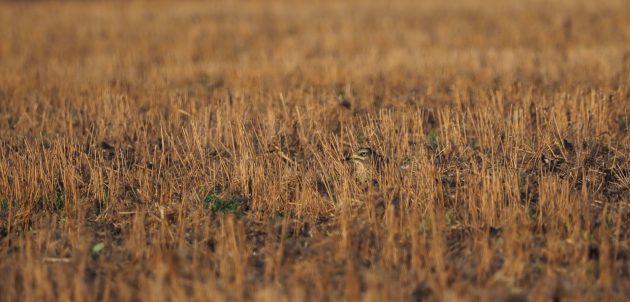
Spot the curlew. They rely on their cryptic plumage to remain unseen
Britain’s Stone Curlews are the most northerly breeding population in the world – in Europe they are most numerous in Spain and France, but they occur as far east at Central Asia and Iran. Thanks to strict protection the English population is stable or even increasing, numbering around 300 pairs, of which the majority are to be found in the Norfolk and Suffolk Brecks. They favour open countryside where the vegetation is low enough to allow them good all-round visibility. They also prefer areas with low rainfall and high summer temperatures – the Brecks are one of the driest and (in summer) warmest areas in England.
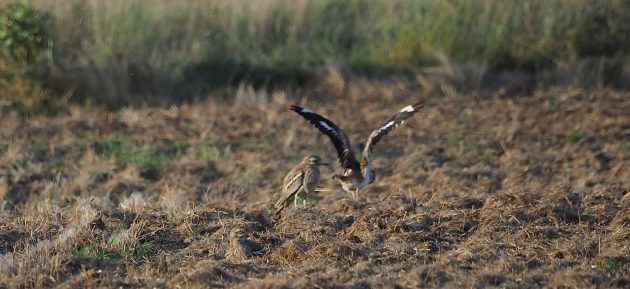
A trio of birds – possibly a family party
Stone Curlews are invariably wary and difficult to approach, and I was never able to approach these birds closely, even in the car. My photographs were all of birds in landscapes, rather than portraits of individual birds. Much as I would have liked to have taken some closer shots, my photographs do show these fascinating birds as you generally see them, at long range.
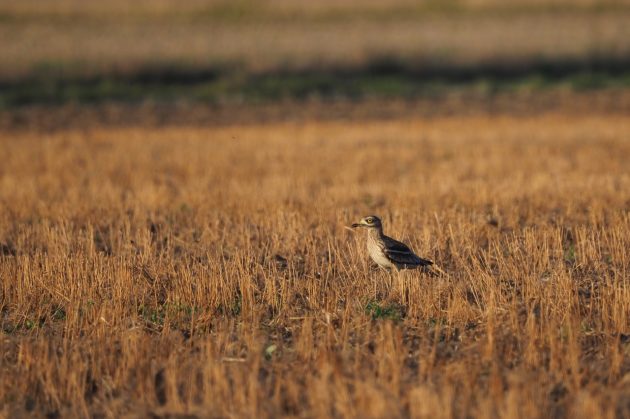
Source link
Facebook
Pinterest
Twitter
LinkedIn

